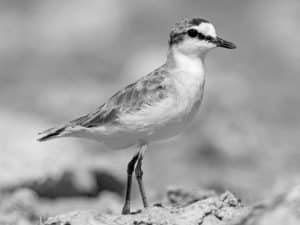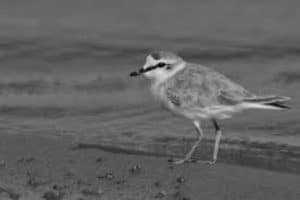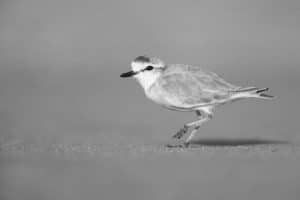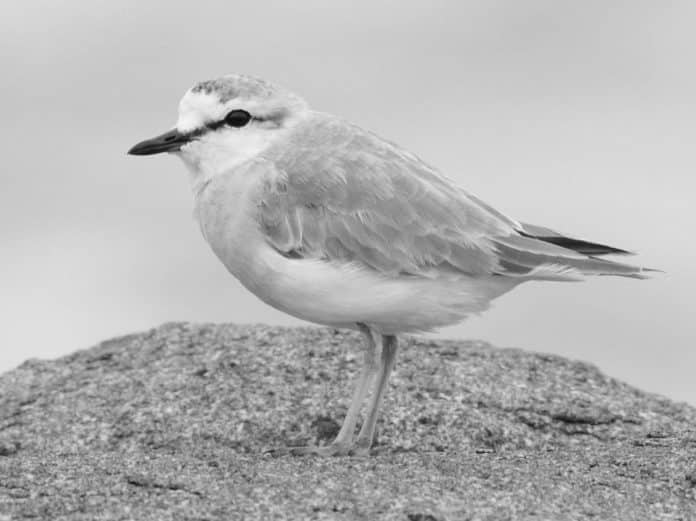Introduction to the White-fronted Plover
Tanzania, a land of breathtaking landscapes and diverse wildlife, is home to a wide array of avian species. Among them, the exquisite white-fronted plover in Tanzania stands out as a captivating sight. With its distinctive white forehead contrasting against its black and brown plumage, this small shorebird is a true marvel of nature. In this article, we will explore the habitat, behavior, and conservation efforts surrounding the white-fronted plovers in Tanzania.
Habitat and Distribution of White-fronted Plovers in Tanzania

White-fronted plovers can be found along the stunning coastline of Tanzania, particularly in areas such as Zanzibar, Dar es Salaam, and the Mafia Island Marine Park. These coastal regions provide an ideal habitat for these birds, as they rely on sandy beaches and mudflats for foraging and nesting. The plovers are commonly spotted near tidal zones, where they can easily access their preferred food sources of small invertebrates, such as crustaceans and insects.
Behavior and Breeding Habits of White-fronted Plovers
White-fronted plovers are known for their agile and swift movements along the shoreline. They possess long, slender legs that enable them to scurry across the sand with grace and precision. These birds are highly territorial during the breeding season, which typically occurs between September and March. The males engage in elaborate courtship displays, including a ritualized dance and vocalizations, to attract a mate.
Nesting is a crucial period for the white-fronted plovers. Their nests consist of a shallow scrape in the sand, carefully hidden among beach debris or vegetation. The female typically lays three to four eggs, which both parents take turns incubating for about three weeks. Once hatched, the chicks are precocial, meaning they are able to leave the nest and feed themselves shortly after hatching.
The Importance of White-fronted Plovers in the Ecosystem
White-fronted plovers play a vital role in the coastal ecosystem of Tanzania. As they forage along the shoreline, they help control populations of small invertebrates, which can otherwise become pests. Additionally, their feeding activities aerate the sand, contributing to the overall health of the beach ecosystem. These birds also serve as indicators of the coastal environment’s well-being, as any disturbances or pollution can have a direct impact on their populations.
Conservation Efforts for White-fronted Plovers in Tanzania

Despite their ecological importance, white-fronted plovers face numerous challenges in Tanzania. Habitat loss due to coastal development, disturbance from human activities, and predation by introduced species are some of the major threats they encounter. To safeguard these remarkable birds, several conservation organizations are working diligently to raise awareness and implement protective measures. These efforts include establishing protected areas, conducting research, and educating local communities about the significance of preserving the plover’s habitat.
Challenges Faced by White-fronted Plovers in Tanzania
The white-fronted plover population in Tanzania faces several hurdles that jeopardize their survival. The rapid expansion of tourism in coastal regions has led to increased disturbance and habitat destruction. Unregulated recreational activities, such as off-road driving and beach camping, can disrupt nesting sites and scare away these sensitive birds. Additionally, the introduction of non-native species, such as feral cats and dogs, poses a significant threat to plover populations by preying on eggs and chicks.
How to Spot and Observe White-fronted Plovers in Tanzania
If you’re eager to catch a glimpse of these captivating birds, there are a few key tips to keep in mind. White-fronted plovers are most active during low tide, as they scavenge for food along the exposed shoreline. Look for their distinctive black and white plumage and listen for their melodious calls, which resemble a soft whistling sound. Remember to maintain a respectful distance and use binoculars or a camera with a zoom lens to observe them without causing disturbance.
The Impact of Tourism on White-fronted Plovers in Tanzania

Tourism in Tanzania has the potential to both positively and negatively affect white-fronted plovers and their habitat. Responsible tourism practices, such as staying on designated paths, refraining from littering, and avoiding disturbance to nesting areas, can greatly minimize the impact on these delicate birds. Additionally, supporting eco-friendly accommodations and tour operators that prioritize wildlife conservation can contribute to the long-term preservation of the white-fronted plover population.
Responsible Tourism Practices to Protect White-fronted Plovers in Tanzania
To ensure the protection of white-fronted plovers and their habitat, there are several responsible tourism practices to follow. Always adhere to local guidelines and regulations, which may include restrictions on access to nesting areas during breeding season. Avoid using flash photography or making loud noises that could startle the birds. Educate yourself and others about the importance of conserving these beautiful creatures and encourage sustainable tourism practices within the local community.
Conclusion: Celebrating the Beauty and Importance of White-fronted Plovers in Tanzania
The white-fronted plover is a true wonder of the wildlife found in the heart of Tanzania. Its striking appearance, fascinating behavior, and ecological significance make it a species worth celebrating and protecting. By raising awareness, supporting conservation efforts, and practicing responsible tourism, we can ensure that future generations have the opportunity to experience the beauty of these remarkable birds along Tanzania’s pristine coastline.

































